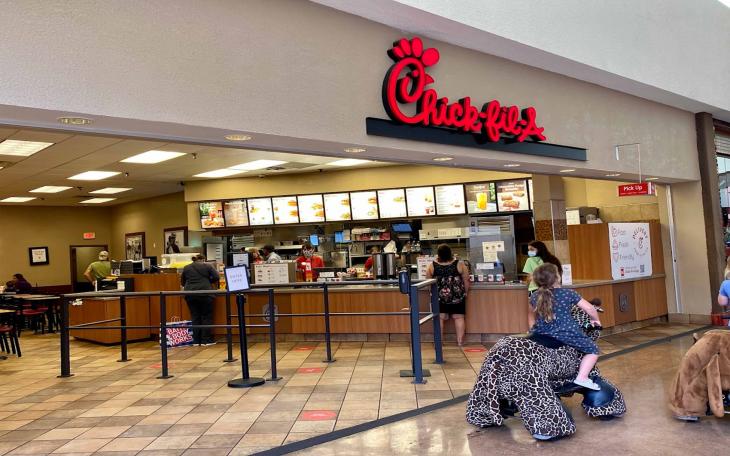AUSTIN—The Texas Parks and Wildlife Department (TPWD) released the findings of an independent panel reviewing the circumstances and cause of an escaped prescribed fire at Bastrop State Park. The findings of the review, also known as a facilitated learning analysis, communicate strengths of TPWD actions during the Rolling Pines Wildfire as well as recommendations for addressing deficiencies, which staff have begun incorporating into the department’s prescribed fire protocols.
The analysis provides a thorough review of the preparation, planning and execution of the prescribed fire, weather and wind speeds, and evaluates staff, equipment and safety resources organized for the Jan. 18 prescribed burn. The burn aimed to remove dense, long-burning sources of fuel that can intensify wildfires and make them harder to contain, as happened in Bastrop during a 2011 wildfire. TPWD regularly conducts prescribed burns to minimize the impacts from wildfire to the community. The Jan. 18 fire was contained on Jan. 24 and burned 812 acres.
The panel, announced two days later, was ordered through Texas A&M Forest Service (TAMFS) and consists of fire experts from across the southern United States knowledgeable about prescribed burns on both public and private land. These specialists have expertise in how fire reacts in environments similar to Bastrop State Park.
A five-member team of wildland fire experts from the state forestry agencies in Florida, Georgia, Oklahoma and South Carolina comprise the review team with specific qualifications and experience spanning that of Incident Commander Type 2, Operations Chief Type 2, Safety Officer Type 1, Firing Boss and Task Force Leader.
“We are thankful for the thorough and thoughtful review of our prescribed fire planning and practices,” said TPWD Executive Director Carter Smith. “Prescribed fires are essential in managing many of our habitats, landscapes and private and public lands across Texas, and while our staff take numerous precautions to conduct their work safely, I know there is always room to make our practices better and safer. The recommendations presented through this facilitated learning analysis will do just that. We have read the report carefully, discussed it extensively and already begun to weave its recommendations into our processes. We can and will do better.”
Prescribed burns have acceptable and target ranges that make up the burn’s prescription. These prescriptions account for a range of factors required for a successful burn, including low enough humidity to allow the fire to maintain a steady pace, plus wind speeds of no less than six miles per hour to move the fire across the targeted landscape while pushing smoke away from urban areas.
While TAMFS issued notices of increased fire danger for multiple counties across Texas that day, these notices were not intended for and did not include Bastrop County.
Once staff determined conditions were within the prescribed burn plan parameters, they held safety meetings and ignited a test fire around 10:30 a.m. At 11:47 a.m., they found the first spot fire found outside of the targeted area and attempted to suppress it, but when they found additional spot fires, the burn boss declared it an escaped fire around 12:25 p.m. and requested assistance from the TAMFS and local fire departments.
From its evaluation, the panel found the Bastrop community has a thorough notification system to communicate when prescribed fires are planned or put into action. This network includes local landowners, elected officials, as well as state and local emergency management partners. The strong development of this network allowed for area first responders to engage the fire quickly. Additionally, the quick action of the burn boss to seek assistance allowed emergency firefighting resources from this network to keep the situation from escalating. The panel agreed this swift decision likely prevented more extensive damage to properties.
Among other findings in the report:
To account for a limited window for prescribed burns at Bastrop State Park, staff added an additional section of the park, known as a burn unit, that increased total acreage from 185 to 268. This left staff to maintain a long fire line, the panel noted.
To get the most out of high morning humidity levels and favorable wind conditions, staff ignited both units simultaneously. The panel recommends focusing on smaller burns for the park, even if that means burning more days out of the year.
Each individual burn unit called for 15 firefighters. After combining the units, a complexity analysis was not documented to determine that the 22 firefighters TPWD had on site was adequate to burn both units. It was recommended that a documented complexity analysis be utilized moving forward to better ensure all available resources including personnel and equipment are on-hand.
As part of the burn plan, the burn boss requested a bulldozer through TAMFS as an additional contingency resource, but due to prior wildfire activity in the area, the local bulldozer and operators were not available. Another bulldozer and operator from a community further away was on its way to the park to serve as a contingency resource. To take advantage of the higher humidity and lower wind speeds, the fire was ignited before the bulldozer was on site. When the bulldozer did arrive, the fire had escaped, and was immediately needed.
During future prescribed burns in high-risk areas of the state, like Bastrop, bulldozers will be required to be on the fire line with the fire fighters before the prescribed fire begins and operators will also attend the pre-fire safety briefings with the entire burn team.
TPWD fire teams currently use national standards to plan for prescribed fires. However, the panel recommends utilizing additional parameters, including the number of days that have passed since the last rain over a quarter of an inch (also known as a wetting rain), soil moisture and other variables.
After burn plans have been drafted for high-risk areas such as Bastrop, the panel recommends TPWD create a process for an additional level of review by a third party. Reviewers should be qualified burn bosses with significant experience in planning, execution, fire behavior, fire weather and area fuel conditions.
The panel also recommended staff receive more fire-suppression training and assist in suppressing fires in Texas and the United States. Staff currently meet the minimum qualifications required in Texas.
Training should include tabletop exercises to make prescribed-fire staff more familiar with transitioning from a prescribed fire to a wildfire. Since escaped prescribed burns are a rare event, exercises will provide valuable learning opportunities to current and prospective prescribed fire leaders.
The panel also recommends additional funding, possibly through federal grants, to increase voluntary land maintenance of some neighboring properties plus working with state partners and nonprofits.
The full facilitated learning analysis is available online at the TPWD website.
Subscribe to the LIVE! Daily
Required






Post a comment to this article here: